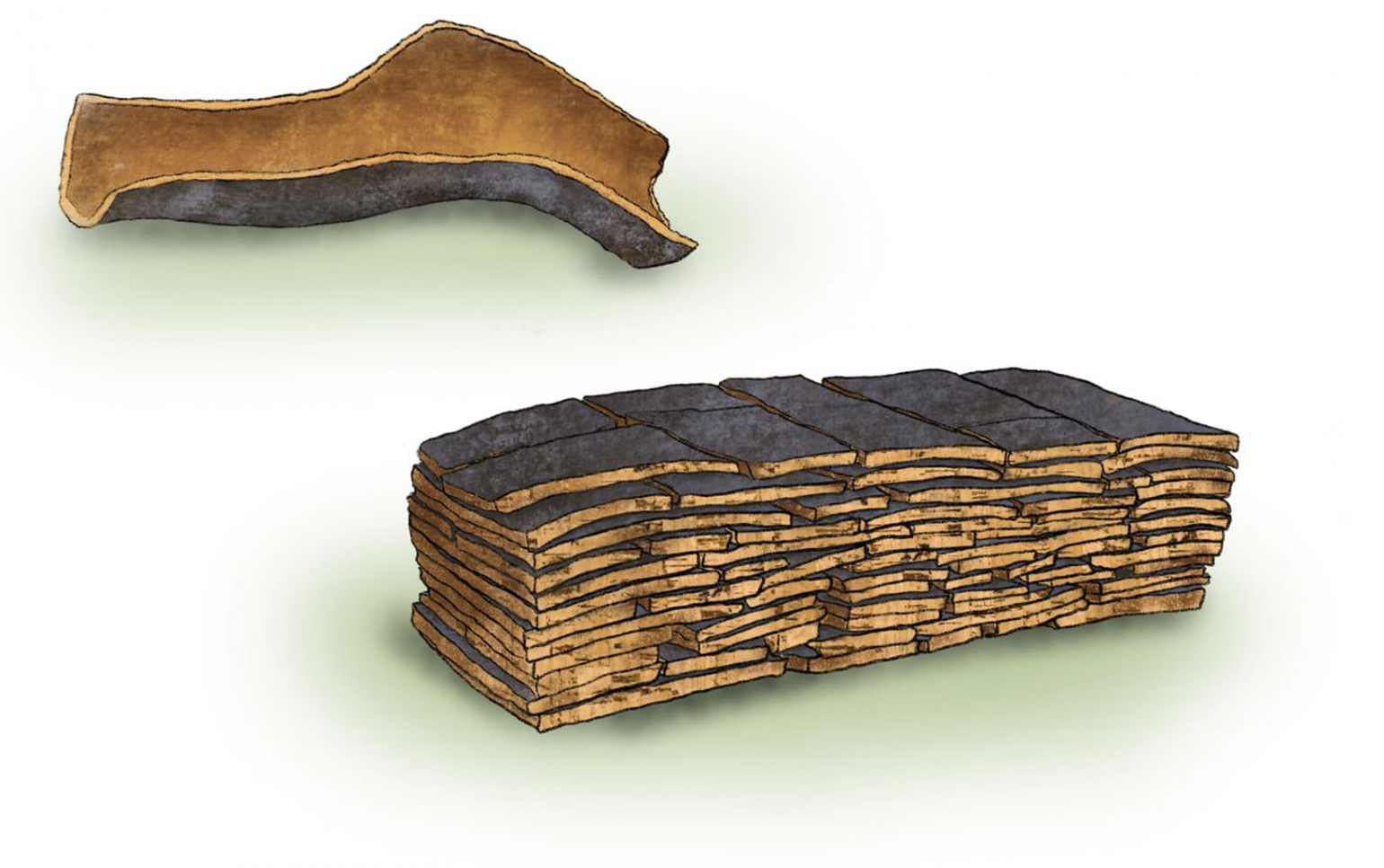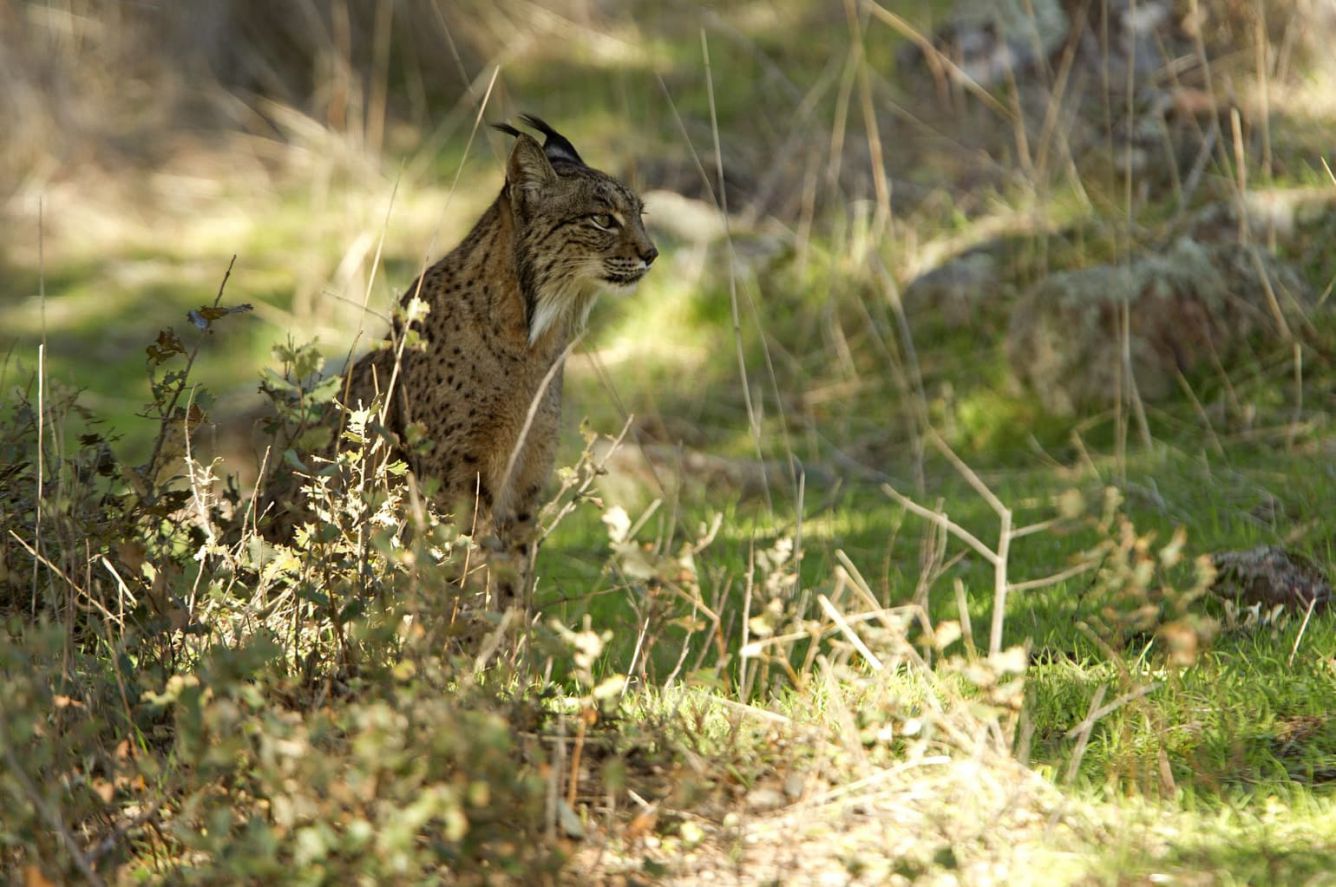Cork: a versatile and beautiful material
From the beautiful plains in the south of Portugal to our family lunch table as a wine stopper, cork goes a long way. But let’s not fool ourselves: it can (and it should) be much more than a simple cap.What is cork?
Cork is essentially an outer layer of the cork oak tree (Quercus suber) bark: a medium-sized evergreen tree, native to Southwest Europe and Northwest Africa. These trees live more than 200 years and are harvested every 9 to 12 years. On average, oak trees need around 25 years to mature before the first cork extraction.

Cork planks are stacked in piles after its extraction.
As a material itself, Cork was described by Robert Hooke in 1665, as a hexagonal cellular structure rich in a substance called suberin, wherefrom comes its classic rubbery feel and water-resistant properties.
With a staggering 40 million wine stoppers produced each day and over 680 companies in the sector, Portugal is the largest producer of cork in the world and the country with more cork oak forest areas – called montados.

Cork and its many uses
Cork can be used in the textile industry and it is ever more common to see accessories and fashion made of cork, from shoes and bags to clothes and jewellery. It also features in furniture, as a great replacement for plastic.
But the main attributes of cork are the ones we can’t really see, like its thermal insulation properties. Did you know that cork is used in the making of rockets or spacecrafts? The nose cone or the propulsion rockets of a ship are usually coated with a thin layer of cork, which is more than enough to avoid a space mission from going down in flames, literally.
Cork may also be used to waterproof infrastructures, foundations and underlays, as well as for acoustic insulation, making it perfect for use in floors, walls, ceilings, roofs and even facades.
Environmental benefits of cork
Cork is not only an extremely versatile and useful material: its environmental value is very high.
- Cork is 100% biodegradable, recyclable and renewable.
- The extraction of the bark is done manually by professionals who carefully remove it from the tree through an ancient process performed in six stages.
- This process, however, does not destroy trees or forests, since the oak tree has a self-regeneration ability, not often seen in all species.

This is, in fact, one of those cases where human intervention is beneficial to the environment. By removing the cork oak’s bark, the absorption of carbon dioxide is stimulated – the more the tree is harvested, the more CO2 it absorbs. It is estimated that all the cork oak tree forest in the world is responsible for absorbing around 10 million tonnes of CO2 annually.
Additionally, the cork oak forests are an important factor in biodiversity preservation as the montados constitute an important habitat for certain endangered species, such as the Iberian lynx.
Protecting oaks: a quest
Did you know that the world’s largest continuous patch of cork oak woodlands is located alongside the Tejo and Sado river basins, and spans over half a million hectares? However, this territory is under pressure due to aquifer pollution and over-exploitation risks.
Aiming at promoting the conservation of this 600,000-acre area, WWF started the Green Heart of Cork (GHoC) project to endorse good sustainable farming and forestry practices.
The main goal is to not only ensure the economic viability and sustainability of cork-making but also to contribute towards biodiversity protection of the associated ecosystems.

Cork oak trees.
Fully committed to environment cherishing, the Jerónimo Martins Group has been supporting this cause since 2013. Through monetary donations to small producers that promote the best environmental practices, it was possible to guarantee an FSC® certification for over 30,000 hectares of woodlots, including a High Conservation Value Area of 1,257 hectares near the Tejo and Sado river basins.
